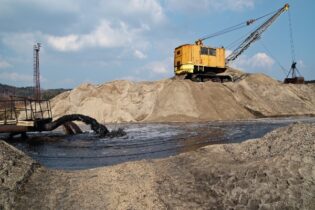In today’s digital landscape, big data and artificial intelligence (AI), including ChatGPT, has transformed the way we work and interact. However, what often goes unnoticed is the enormous amount of water that AI consumes.
 By Boitumelo Pako Matshediso, Talbot Analytics business unit manager Data centres play a crucial role in supporting the infrastructure necessary for AI applications, and these data centres rely on exorbitant amounts of water for their power and cooling needs. According to research, for every 5-50 prompts, ChatGPT consumes approximately 500 ml of water. In its recent environmental report, Microsoft disclosed that its global water consumption spiked 34% from 2021 to 2022 (to nearly 6.5 million litres or more than 2 500 Olympic-sized swimming pools). This is a sharp increase, compared to previous years, that outside researchers tie to its AI research. Meanwhile, Google reported a 20% growth in water use during the same period. Leading tech developers including Microsoft, OpenAI and Google have acknowledged that growing demand for their AI tools leads to hefty water consumption. As AI becomes woven into more apps and devices, this usage and consequent water consumption is set to rise dramatically. Soon, AI-powered banking interactions, website interfaces, e-commerce, and even mundane household tasks will be commonplace. As a result, water consumption will rise in tandem, putting more strain on our already limited freshwater resources. The South African data centre energy requirement was estimated at 434.86 MW in 2024 and is expected to reach 828.93 MW by 2029. Reducing water consumption
By Boitumelo Pako Matshediso, Talbot Analytics business unit manager Data centres play a crucial role in supporting the infrastructure necessary for AI applications, and these data centres rely on exorbitant amounts of water for their power and cooling needs. According to research, for every 5-50 prompts, ChatGPT consumes approximately 500 ml of water. In its recent environmental report, Microsoft disclosed that its global water consumption spiked 34% from 2021 to 2022 (to nearly 6.5 million litres or more than 2 500 Olympic-sized swimming pools). This is a sharp increase, compared to previous years, that outside researchers tie to its AI research. Meanwhile, Google reported a 20% growth in water use during the same period. Leading tech developers including Microsoft, OpenAI and Google have acknowledged that growing demand for their AI tools leads to hefty water consumption. As AI becomes woven into more apps and devices, this usage and consequent water consumption is set to rise dramatically. Soon, AI-powered banking interactions, website interfaces, e-commerce, and even mundane household tasks will be commonplace. As a result, water consumption will rise in tandem, putting more strain on our already limited freshwater resources. The South African data centre energy requirement was estimated at 434.86 MW in 2024 and is expected to reach 828.93 MW by 2029. Reducing water consumptionThis presents a unique opportunity for water professionals to lead the way towards a more sustainable future.
Critical to this is pioneering innovative technologies that optimise cooling systems in data centres and the development of closed-loop systems to minimise water usage. We have opportunities to design advanced recycling and water reuse systems that reduce the dependency on freshwater sources, ensuring the efficient operation of data centres while conserving already scarce resources. Strategies such as rainwater collection and adiabatic cooling, which uses air instead of water as a cooling strategy, go a long way to curb water consumption. The irony While AI consumes water, it can also be used to save water. The old adage that “you cannot manage what you cannot measure” rings true here and in order to save water you need to improve its management. Data, digital twins and machine learning algorithms are now being leveraged to optimise water distribution systems by improving water distribution management, detecting leaks, and identifying faulty equipment and process inefficiencies as well as ensuring proactive maintenance. Talbot has developed a digital tool called TalbotAnalytics that gives water users an instant, at-a-glance picture of how they are doing across the water spectrum. Cost-effective and customisable, TalbotAnalytics serves as a single repository that enables users to visualise and interpret their data so that they can make smarter, more insightful and strategic business decisions. Data obtained could relate to anything from water quality, environmental compliance, water consumption, cost or product savings and recycling rates, leading to improved plant chemical costs and monitored operator performance.







